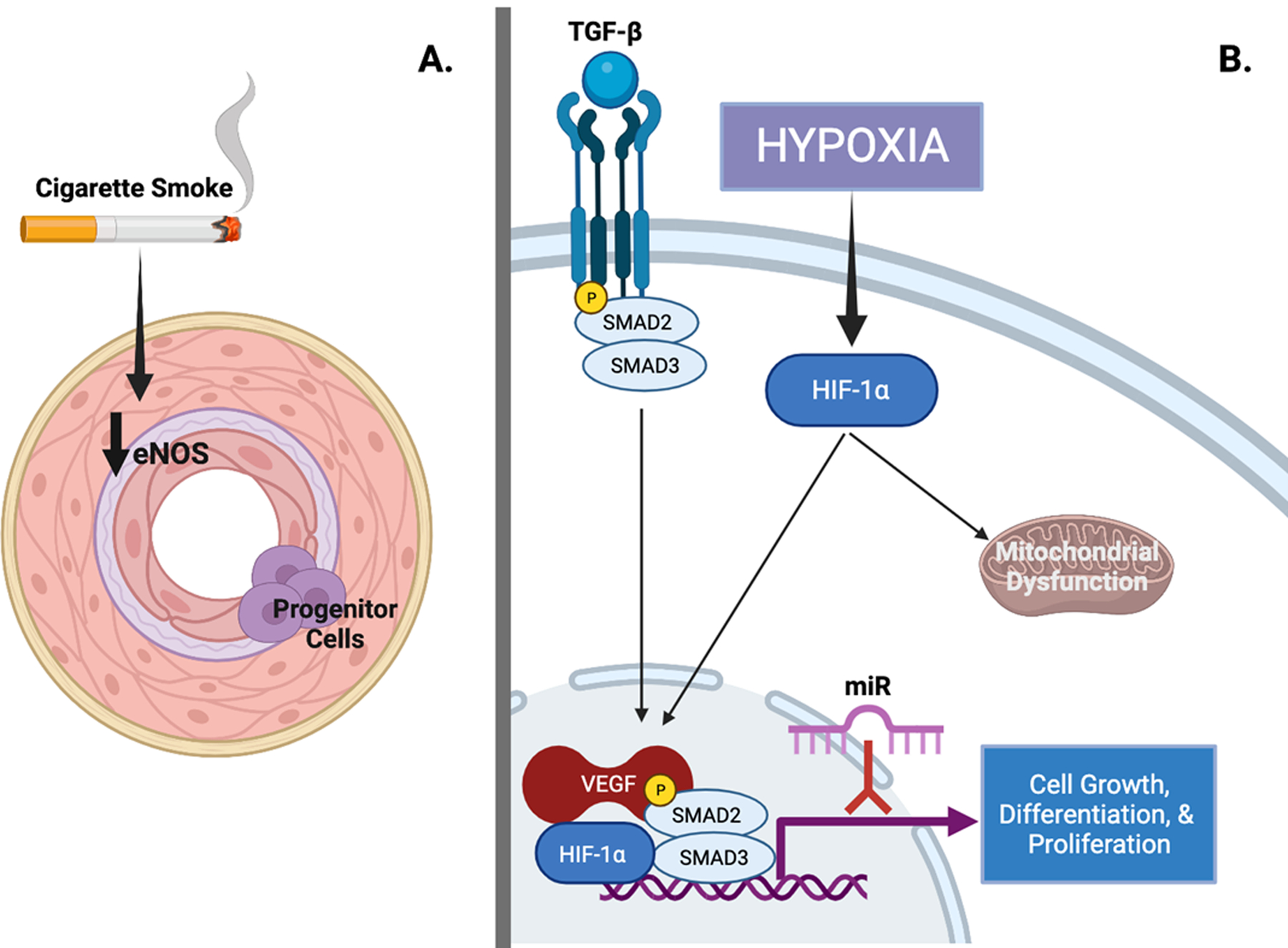Figure 1.

Molecular mechanisms of pulmonary vasculopathy in Group 3 pulmonary hypertension (PH).
A. Cigarette smoke leads to decreased expression of endothelial nitric oxide (eNOS) along with intimal hyperplasia, increased expression of vascular endothelial growth factor (VEGF), inflammatory infiltrate, and metabolic dysfunction. Poorly differentiated progenitor cells have been observed in the intima of pulmonary arteries; their origin and role in the development of pulmonary vasculopathy remains unclear. B. Hypoxia inducible factor-1 alpha (HIF-1α) and transforming growth factor-beta (TGF-β) signaling are recognized to regulate growth, differentiation, and proliferation of almost all cell types in hypoxia-induced PH. VEGF expression is induced by hypoxia via HIF-1α signaling. HIF-1α is also thought to play a central role in the development of mitochondrial dysfunction that may explain a Warburg-like shift to anaerobic glycolysis. microRNAs (miRs) are small noncoding RNAs that regulate gene expression and in mouse models inhibition of miRs prevent development of pulmonary vasculopathy. Figure created with biorender.com. (Illustration Credit: Ben Smith).
